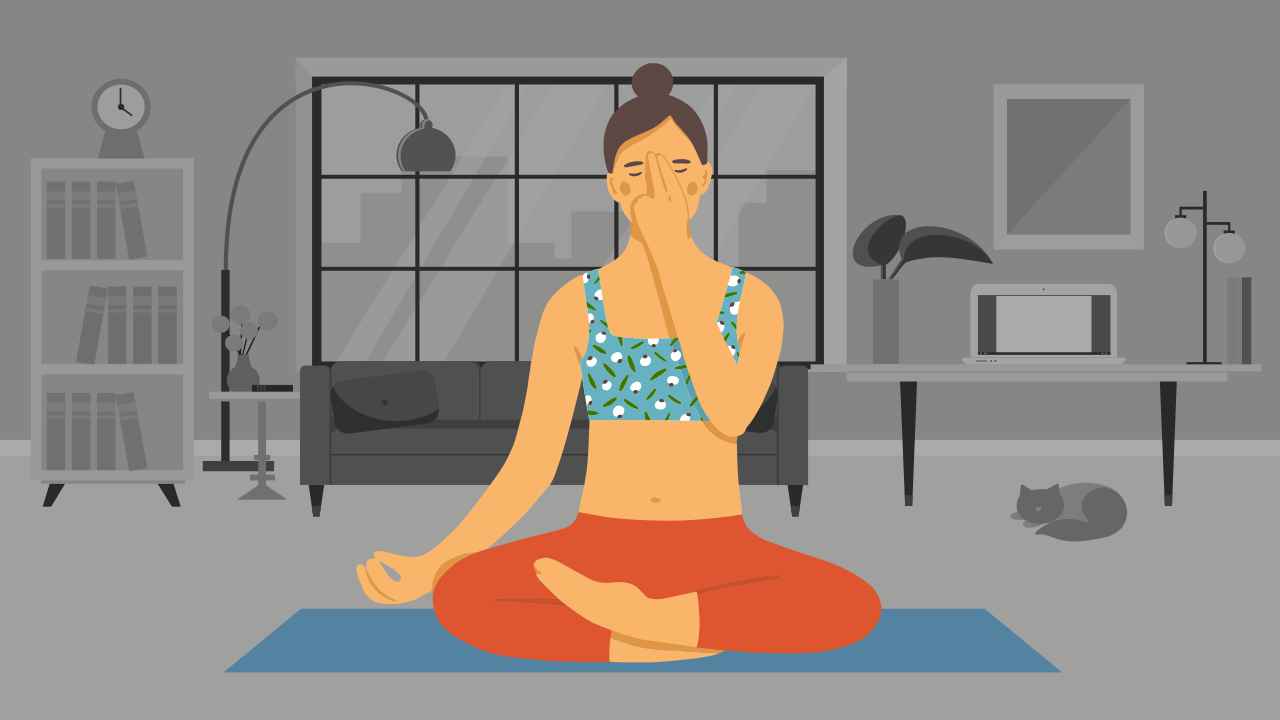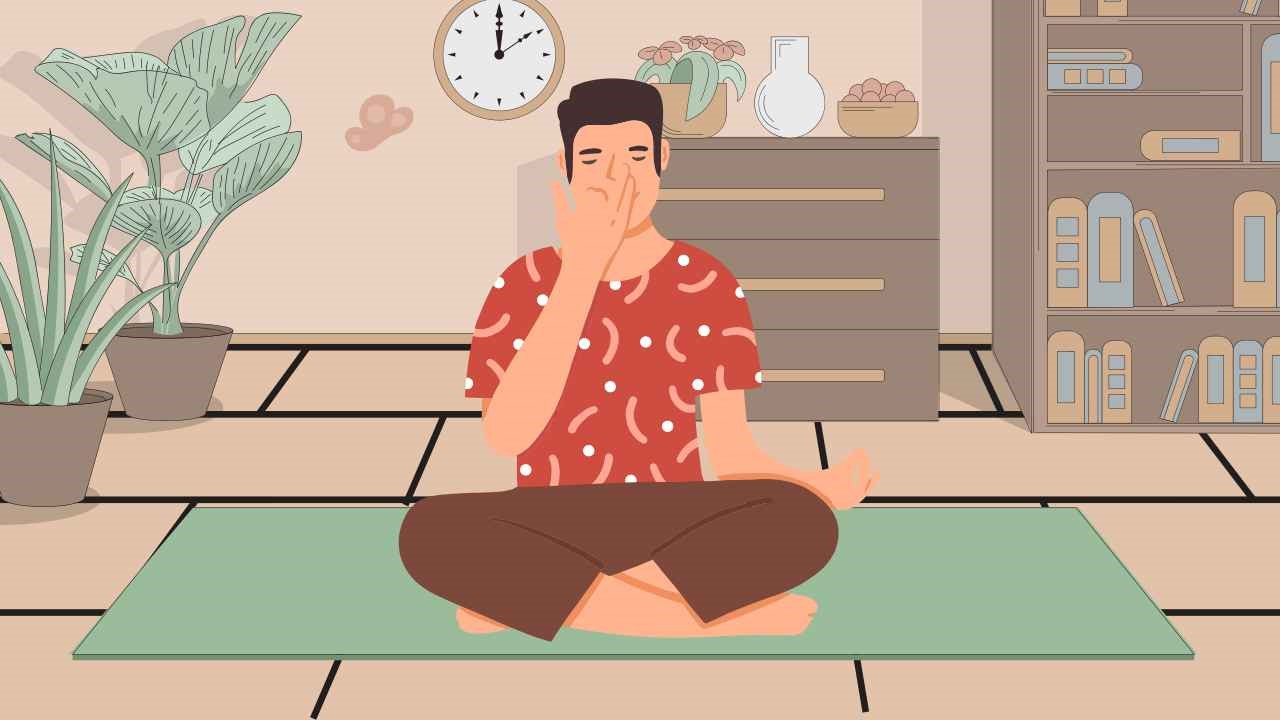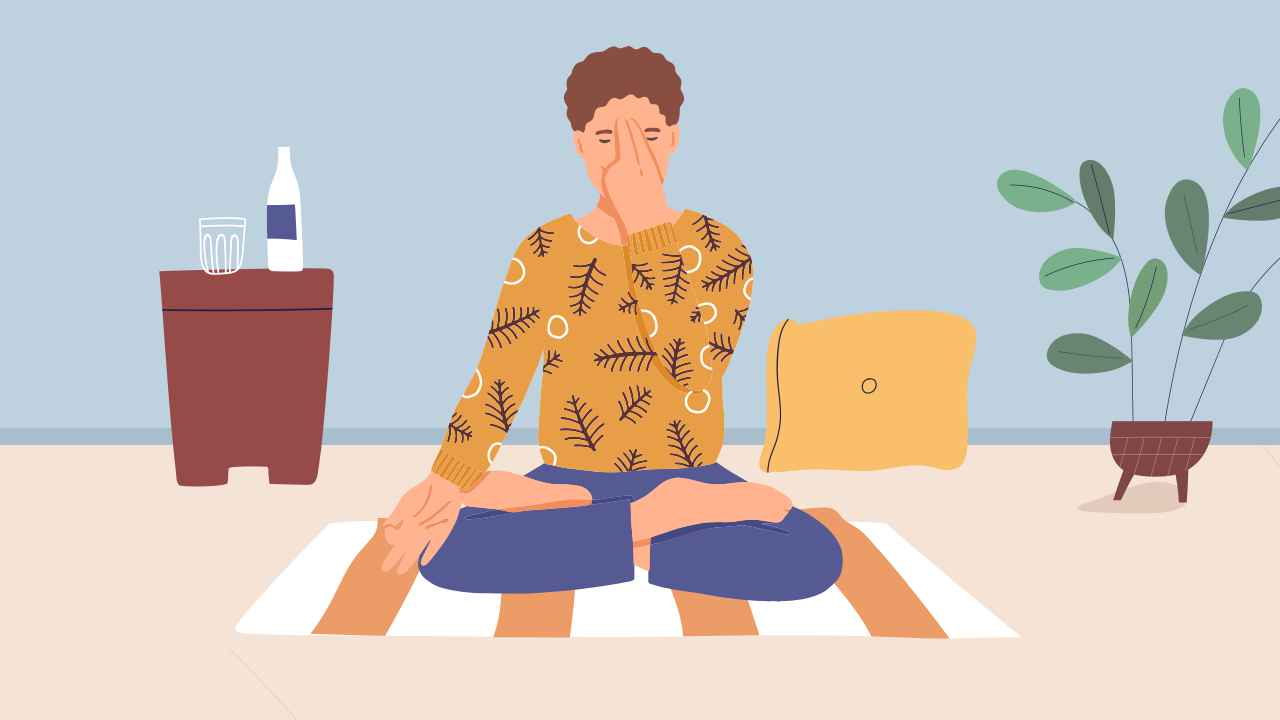
How to Perform Savasana

The practice of Savasana includes slow relaxation of the body and mind. It allows you to enter a state of complete relaxation, which can help you feel refreshed and rejuvenated. Practicing Savasana daily can condition your body to release stress more efficiently and enhance your physical and emotional well-being. In order to achieve a state of complete relaxation and reap the maximum benefits of this asana, you need to make sure that you practice it correctly.
Here’s a step-by-step guide to performing Savasana.
- Find a quiet place or a corner in your house. You may want to ensure that there are no disturbances during the practice of Savasana.
- Practice Savasana after finishing your yoga exercises (asanas). However, you may do it as a standalone activity as well if you experience fatigue or any physical or any physical or mental strain.
- Ensure that your breathing is natural and rhythmic at all times
Steps to do Savasana
The start
- Lie down on your back with your arms and legs spread out at the sides comfortably. Your arms will not be too far away or too close to the body. Similarly, keep your legs a few feet apart.
- Make sure that your neck, lower back, and hips are well rested on the floor
- Refrain from any kind of movement. Now, gradually close your eyes and continue breathing as usual.
Partial relaxation
- Bring your awareness to the 16 vital zones (Marmasthanani) as discussed previously in the ‘Important Things to Know About Savasana: A Relaxation Yoga Technique’ article and relax the muscles in those parts of your body.
- Imagine every tissue, nerve, and tiny fiber of your toe relaxing by starting from your feet and then moving on to other parts of the body. Feel the sensation in that part and then withdraw it. Disassociate yourself from that part, as if it is falling dead.
- Maintain this relaxed state for about 10 to 15 minutes.
Posture release
- Bring your attention slowly to the body. Make gentle movements with your fingers and toes.
- Turn to your right side and lie down gradually in Drdasana; it is a position wherein you fold your right hand at the elbow and rest your hand on the right forearm. Keep both the knees bent. The right knee should be over the left one. Place your left palm on your hip. Maintain this pose for a few breaths.
- Take any sitting posture of your choice in a gradual manner
- Open your eyes
Benefits of Savasana
Here are a few advantages of doing the practice of Savasana:
- It has many health benefits
- It is a given that 15 minutes of Savasana daily is equivalent to an overnight sleep
- It leaves a tranquilizing and calming effect on your mind; it is especially helpful in managing daily stress or anxiety
- It provides relief from any kind of ache or pain in the body, relaxing the body completely. It is found that Savasana has a therapeutic effect on the muscular and nervous tension in your body
- It acts as a remedy for headaches, fatigue, or insomnia. The purposeful relaxation normalizes blood pressure and stimulates blood circulation, thereby enhancing respiratory cycles.
The practice of Savasana helps muscles work more efficiently after a short period of relaxation and improves the flow of blood throughout the body. Eventually, this practice results in superior mental strength, thanks to the meditative impact of the exercise on the nervous system.
Also watch: Meditation for Stress Relief: Introduction
This simple yet effective technique of relaxation can also be a tool for higher spiritual practices. Yogis have found that devoting just a couple of minutes a day towards the practice of Savasana can heal the body and calm the mind.
References
1. Yogendra J. Cyclopedia Volume 1 Yoga. Santacruz: The Yoga Institute, 1988.
2. Kuvalayananda Swami. Asanas. Lonavla: Kaivalyadhama SMYM Samiti, 1933.













